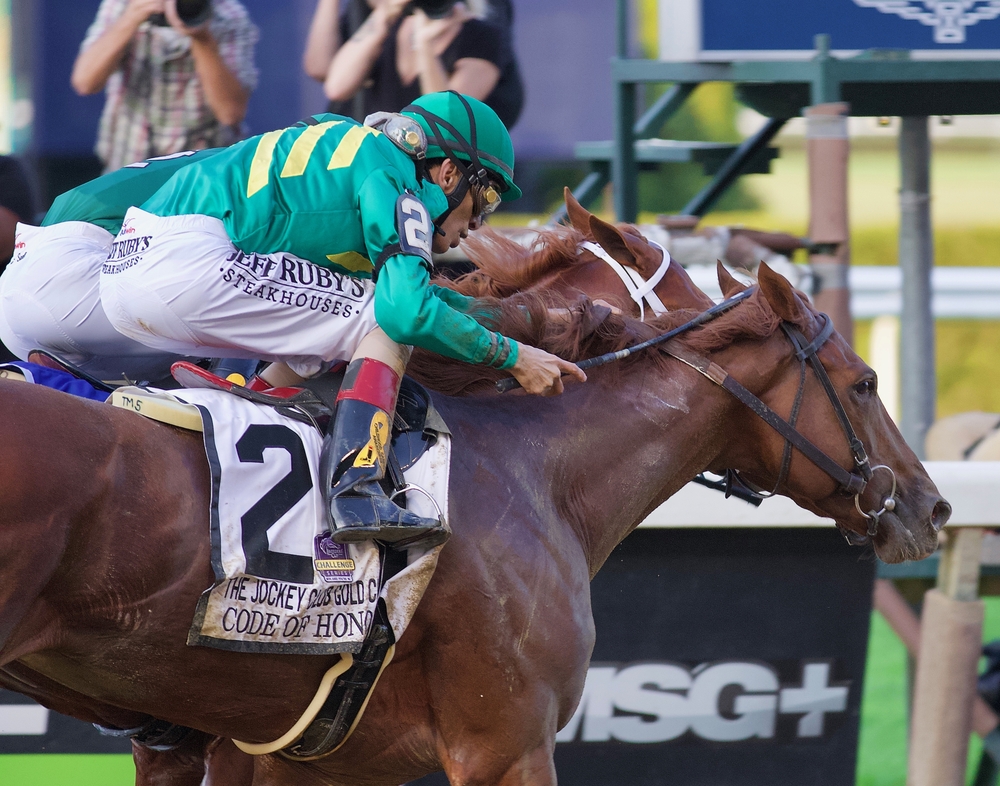Track conditions play a crucial role in horse racing, affecting the performance of the horses and ultimately determining the race results. Different types of track conditions, such as fast, wet, muddy, hard or grassy, can significantly impact a horse’s ability to run and perform at its best. Understanding how track conditions affect race outcomes is essential for anyone involved in horse racing, from breeders and trainers to bettors and fans.
The impact of track conditions on performance can vary depending on the type of surface and the weather conditions. For example, dirt, turf, and synthetic tracks each have their unique characteristics and challenges, and horses may perform differently on each surface. Similarly, weather conditions such as rain or snow can affect the track surface, making it wet or muddy and changing the race dynamics. Therefore, it is essential to consider both track and weather conditions when handicapping races and making betting decisions.
Key Takeaways
- Track conditions play a crucial role in horse racing, affecting the performance of the horses and ultimately determining the race results.
- Different types of track conditions, such as fast, wet, muddy, hard or grassy, can significantly impact a horse’s ability to run and perform at its best.
- Understanding how track conditions affect race outcomes is essential for anyone involved in horse racing, from breeders and trainers to bettors and fans.
Understanding Horse Racing
Horse racing is a popular sport that involves racing horses with riders, known as jockeys, competing against each other to determine the fastest horse and rider combination. The sport has a long history and is popular all over the world, with different variations such as national hunt, quarter horse, and thoroughbreds.
In horse racing, the horses are trained by trainers who work with them to ensure they are in top physical condition. The horses are also assigned weights by a handicapper to level the playing field, with the weights being assigned based on the horse’s weight, breeding, skills, and past performance. The horses deemed superior in terms of these factors are given heavier weights, while those considered less skilled or have weaker performances are given lighter weights.
The Japan Racing Association (JRA) is one of the leading horse racing organizations in the world, with a focus on thoroughbred racing. The JRA has a strict set of rules and regulations that govern the sport, including rules on track conditions. Track conditions significantly influence horse racing, with track surfaces playing a vital role in determining race outcomes.
There are three main types of track surfaces: dirt, turf, and synthetic, each with its unique characteristics and challenges. Dirt tracks are the most common type of track surface and are made up of a mixture of clay, sand, and silt. Turf tracks are made up of grass and are often used for turf races. Synthetic tracks are made up of a combination of materials, including rubber and sand, and are designed to provide a consistent racing surface in all weather conditions.
The condition of the track surface can have a significant impact on the performance of the racehorses. Wet or muddy tracks can slow down the horses and make it more difficult for them to run at their best. Dry or hard tracks can also affect the horses’ performance, with some horses struggling to run on hard surfaces. Trainers and jockeys must take into account the track conditions when preparing their horses for a race and adjust their strategies accordingly.
In conclusion, horse racing is a complex sport that involves many factors, including the condition of the track surface. Understanding how track conditions can affect the performance of racehorses is essential for trainers and jockeys to develop effective strategies and ensure the best possible outcomes.
Impact of Track Condition on Performance
Track condition is one of the most significant factors that affect the performance of racehorses in flat races. The condition of the racing surface can vary from dirt, turf, synthetic, grass, clay, and more. The surface can also be classified as soft, hard, muddy, or sloppy, depending on the amount of moisture present.
The type of racing surface can significantly impact the performance of the horse and ultimately influence the race results. For instance, horses that are bred for dirt racing may not perform as well on turf courses, and vice versa. The track conditions can also affect the horse’s speed and stamina.
Soft ground, for example, can slow down the horses and make it more challenging for them to maintain their speed. On the other hand, hard ground can be more challenging on the horse’s legs and can cause injuries.
Moreover, the weather can also have a significant impact on the track conditions. Rain and humidity can make the surface slippery, making it more challenging for horses to maintain their balance and speed.
In summary, the track condition plays a crucial role in the performance of racehorses. It can significantly affect the speed, stamina, and balance of the horse, ultimately influencing the race results. Therefore, horse racing enthusiasts need to pay close attention to the track conditions when placing bets or predicting race outcomes.
Influence of Weather and Surface Type
The weather and track surface type can significantly affect the performance of horses in horse racing. Generally, the ideal temperature range for racing is between 50 and 70 degrees Fahrenheit, as horses tend to perform optimally within this range. Rain and humidity can also significantly impact horse racing. Wet track conditions can lead to a slippery surface, making it more challenging for horses to maintain their balance and speed.
The type of track surface can also affect horse racing outcomes. Dirt tracks tend to be the most common surface type, with turf and synthetic tracks also being used. Turf tracks are typically softer than dirt tracks, which can impact the speed of the horses. Synthetic tracks, which are made of a mixture of materials, are designed to provide a consistent surface that is less affected by weather conditions.
The condition of the track surface is also crucial in determining the outcome of horse races. Heavy rainfall can turn a dirt track into a muddy or sloppy surface, which can slow down the horses and make it more difficult for them to run. A yielding track is slightly softer than a firm track but not as soft as a muddy track. A firm track is a hard and fast surface that can lead to faster race times.
In conclusion, the weather and track surface type can significantly impact horse racing outcomes. The condition of the track surface, including the amount of moisture present, is also crucial in determining race results. Horse racing enthusiasts and bettors should consider these factors when making their predictions and wagers.
Horse Breeding and Performance
The breeding of a horse is a crucial factor in determining its potential and performance on the track. It is widely accepted that the genetic makeup of a horse plays a significant role in its racing ability. The sire and dam of a horse are the two most important factors in determining its genetic makeup.
The age of a horse is also a crucial factor in its performance. As horses age, their physical abilities decline, and they become more prone to injuries. Younger horses tend to have more energy and are more agile, which can give them an advantage on the track. However, older horses may have more experience and can use their knowledge to their advantage.
Horses that are bred for racing tend to perform better than those that are not. These horses are specifically bred for their speed, agility, and endurance, which are all essential qualities for a racehorse. The value of a racehorse is often determined by its breeding and potential for success on the track.
In addition to breeding, the condition of the track can also have a significant impact on a horse’s performance. The surface of the track can affect a horse’s speed and can cause fatigue or injury. For example, a dirt track may become heavy and slow after rainfall, which can slow down the horses and cause them to tire more quickly. On the other hand, a turf track may become too firm and cause injuries to the horses’ legs.
In conclusion, the breeding and age of a horse are important factors in determining its potential and performance on the track. Horses that are specifically bred for racing tend to perform better than those that are not. Additionally, the condition of the track can have a significant impact on a horse’s speed and can cause fatigue or injury.
Training and Horse Health
The track surface condition can have a significant impact on a racehorse’s performance and health. Therefore, it is essential to train horses effectively and ensure they receive proper care and attention to maintain their health.
Training is a crucial factor that affects a horse’s performance. Trainers must develop a training program that takes into account the horse’s age, physical condition, and racing experience. They must also ensure that the horse is trained on different track surfaces to prepare them for race day.
Horse health is also an essential factor that can affect a horse’s performance. Horses must receive proper care and attention to prevent injuries and illnesses. Regular veterinary check-ups and vaccinations are necessary to maintain their health.
In addition, proper nutrition is essential for a horse’s health and performance. Horses require a balanced diet that provides them with the necessary nutrients and energy to perform at their best. Trainers must ensure that horses receive the right amount of food and water to prevent dehydration and maintain their energy levels.
Finally, racehorses are athletes, and like any other athlete, they require proper rest and recovery time. Trainers must ensure that horses receive adequate rest between races to prevent injuries and maintain their health.
In summary, training and horse health are essential factors that can affect a horse’s performance and race results. Trainers must develop a training program that takes into account the horse’s age, physical condition, and racing experience. Horses must receive proper care and attention to prevent injuries and illnesses, including regular veterinary check-ups, proper nutrition, and rest and recovery time.
Race Variables and Handicapping
Handicapping is a process of assigning weights or handicaps to horses in a race to level the playing field and make the race more competitive. Handicapping involves analyzing various factors that can affect a horse’s performance, including the horse’s past performances, the jockey’s record, the track conditions, and the distance of the race.
One of the most important factors that handicappers consider is the type of course and the track conditions. The way a track runs has a massive effect on the result. Certain horses only show their best form on quick ground, some only when it is soft. In flat racing, the track can have quicker parts, producing a draw bias.
Another important factor to consider is the distance of the race. Some horses perform better over shorter distances, while others excel over longer distances. Handicappers use past performance records to determine a horse’s preferred distance and adjust their handicaps accordingly.
The weight carried by a horse is also an important factor in handicapping. The weight carried by a horse can affect its speed and stamina, and handicappers adjust the weights accordingly to level the playing field.
The gate or draw can also affect a horse’s performance, especially in flat racing. Horses closer to the rail may have an advantage, depending on the track conditions and the distance of the race.
Handicappers also consider the time differences between horses in previous races. This information can help them predict how a horse will perform in future races.
In summary, handicapping is a complex process that involves analyzing various factors that can affect a horse’s performance. The type of course, track conditions, distance of the race, weight carried, gate or draw, and time differences between horses are all important factors that handicappers consider when assigning handicaps to horses.
Betting and Strategy
When it comes to betting on horse racing, understanding track conditions is crucial. It can significantly affect the performance of horses and ultimately influence the outcome of the race. Therefore, bettors need to develop a solid betting strategy to increase their chances of success.
One important factor to consider is the horse’s chance of winning. The track condition can either improve or hinder a horse’s performance. For instance, a horse that performs well on a firm track may struggle on a heavy track. Therefore, it is essential to pay attention to the track conditions and how they can affect each horse’s performance.
Another critical aspect is accuracy. Bettors need to be as accurate as possible when predicting the outcome of a race. This requires a deep understanding of the track conditions, the horse’s past performances, and other relevant factors. By being accurate, bettors can make informed decisions and increase their chances of success.
Value is also an important consideration. Bettors need to be able to identify when a horse is undervalued or overvalued. This requires a thorough analysis of the horse’s past performances, the track conditions, and other relevant factors. By identifying value, bettors can make more profitable bets.
Handicap and handicapping are also important concepts to understand. Handicap refers to the weight assigned to a horse to level the playing field. Handicapping, on the other hand, is the process of analysing a race to determine which horse has the best chance of winning. It involves considering various factors such as the horse’s past performances, the track conditions, the jockey, and more.
Past performances are also crucial when developing a betting strategy. Bettors should carefully analyse a horse’s past performances to identify patterns and trends. This can help them identify horses that are likely to perform well in specific track conditions.
Finally, the purse is an important consideration. The purse refers to the prize money that is awarded to the winner of a race. Bettors should consider the purse when developing their betting strategy as it can influence the quality of horses that are competing in the race.
In summary, developing a solid betting strategy requires a deep understanding of track conditions, the horse’s past performances, and other relevant factors. By being accurate, identifying value, and considering handicaps, handicapping, and the purse, bettors can increase their chances of success.
Injuries and Racehorses
Racing injuries are a serious concern for the health and welfare of thoroughbred racehorses. Bone fractures are the most common injuries in horse racing, and they can be fatal. Complicated, unstable fractures cannot withstand immediate weight-bearing, and this means many fractures cannot be repaired. In such circumstances, the most humane measure is to put the horse down.
Track conditions can play a significant role in the occurrence of racing injuries. A hard or uneven track can increase the risk of bone fractures. If the track is too hard, it can cause the horse’s legs to absorb more shock than they can handle, leading to injuries. On the other hand, a soft track can cause the horse’s legs to sink in, which can also lead to injuries.
To minimize the risk of racing injuries, it is essential to maintain the track in optimal condition. This includes proper irrigation, grading, and cushioning. The track surface should be consistent and free of any irregularities that could cause a horse to stumble or trip.
In addition to track condition, other factors can contribute to racing injuries, including the horse’s age, weight, and health. A horse that is not in good physical condition is more likely to sustain an injury than a healthy horse. Therefore, it is essential to monitor the health of the horses and provide them with proper care and nutrition.
Overall, racing injuries are a significant concern in horse racing, and it is crucial to take all necessary precautions to minimize the risk of injury. Proper track maintenance and horse care are essential to ensure the health and welfare of thoroughbred racehorses.
Horse Racing Around the World
Horse racing is a popular sport that is enjoyed all around the world. Different regions have their unique styles and traditions when it comes to horse racing. In North America, horse racing is a popular pastime, with some of the most prestigious races taking place at tracks such as Hollywood Park, Santa Anita, and Arlington. These tracks are known for their fast dirt surfaces, which can be affected by weather conditions.
In Europe, horse racing has a rich history and is often associated with royalty and high society. Some of the most famous races take place at tracks such as Newmarket, Longchamp, and Chantilly. These tracks are known for their turf surfaces, which can be affected by rain and other weather conditions.
In Arabia, horse racing has a long and proud tradition, with many races taking place on desert tracks. These tracks are known for their sandy surfaces, which can be affected by wind and other weather conditions.
One of the most famous races in the world is the Epsom Derby, which takes place in England. This race is known for its challenging course, which includes a steep hill known as the “Tattenham Corner.” The track at Epsom is a turf surface that can be affected by weather conditions.
Keeneland is another famous track in North America, known for its beautiful surroundings and top-class racing. The track at Keeneland is a turf surface that can be affected by weather conditions.
Overall, the condition of the track can have a significant impact on the performance of horses and the outcome of races. Trainers and jockeys need to take into account the condition of the track when preparing for a race.
Conclusion
In conclusion, the track condition is a crucial factor that can significantly impact the performance and race results in horse racing. The ideal temperature range for racing is between 50 and 70 degrees Fahrenheit, and horses tend to perform optimally within this range. Wet track conditions can lead to a slippery surface, making it more challenging for horses to maintain their balance and speed.
The type of track surface, whether dirt or turf, can also affect the racing time of horses. The racing time can vary depending on the nature of training, sex, age, weight carried, performance, genetics, racing distance, number of runners, and the connection between the jockey and the horse. Therefore, it is essential to consider these factors when placing bets on horse racing.
It is also important to note that a horse’s preferred track conditions can vary depending on the horse’s breed, running style, and individual preferences. The condition of the track can affect a horse’s speed and ability to accelerate. A fast and firm track generally favours horses with a high cruising speed, while a soft and yielding track can benefit horses with a strong finishing kick.
Overall, understanding the track conditions and how they can affect the performance of horses is crucial for horse racing enthusiasts, trainers, jockeys, and bettors. By taking into account the various factors that influence the racing time and results, one can make informed decisions and increase their chances of success in this exciting and dynamic sport.
Frequently Asked Questions
How do different track conditions affect the speed of horses in a race?
Track conditions can significantly impact the speed of horses in a race. For example, a dry and firm track surface can provide a faster track, whereas a wet and muddy track can slow down horses, making it harder for them to run at their full potential. Similarly, a track with longer grass can also slow down horses, as it creates more resistance and reduces their speed.
What impact do wet track conditions have on horse racing performance?
Wet track conditions can have a significant impact on horse racing performance. A wet and muddy track can slow down horses, making it harder for them to run at their full potential. This can result in unexpected race outcomes, with slower horses having a better chance of winning. Additionally, wet conditions can increase the risk of slips and falls, which can be dangerous for both horses and jockeys.
How does the hardness of the track surface affect horse racing results?
The hardness of the track surface can affect horse racing results. A hard track can be more challenging for horses to run on, as it creates more impact and can lead to injuries. On the other hand, a soft track can be more forgiving, reducing the risk of injuries. However, a soft track can also slow down horses, making it harder for them to run at their full potential.
What effect do muddy track conditions have on the outcome of horse races?
Muddy track conditions can have a significant impact on the outcome of horse races. A muddy track can slow down horses, making it harder for them to run at their full potential. This can result in unexpected race outcomes, with slower horses having a better chance of winning. Additionally, muddy conditions can increase the risk of slips and falls, which can be dangerous for both horses and jockeys.
How does the length of the grass on the track affect horse racing performance?
The length of the grass on the track can affect horse racing performance. Longer grass can create more resistance, slowing down horses and making it harder for them to run at their full potential. Shorter grass, on the other hand, can create a faster track, allowing horses to run at higher speeds. However, shorter grass can also be more slippery, increasing the risk of slips and falls.
What role do track conditions play in determining the winner of a horse race?
Track conditions can play a significant role in determining the winner of a horse race. Horses that perform well on a dry and firm track may struggle on a wet and muddy track, and vice versa. Additionally, the hardness of the track surface, the length of the grass, and other factors can impact the performance of horses. Therefore, it is essential to consider track conditions when predicting the outcome of a horse race.





